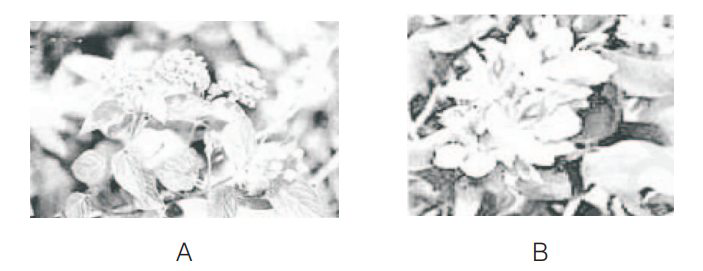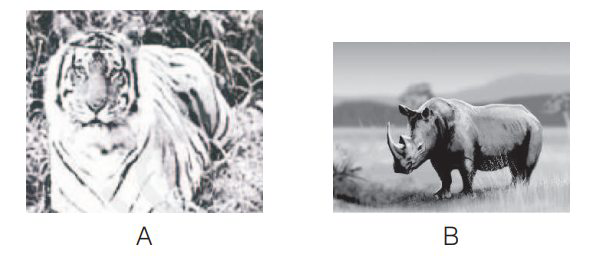$$ \text { What is common to the species shown in figures } A \text { and } B \text { ? } $$

$$ \text { Both are angiospermic flowering plants. } $$
$$ \text { What is common to the species shown in figures } \mathrm{A} \text { and } \mathrm{B} \text { ? } $$

$$ \text { Both the species are conserved in their natural habitats. } $$
How is the presently occurring species extinction different from the earlier mass extinctions?
In earlier time extinction of species occurred due to natural causes or calamities like flood, volcanic eruption, prolonged drought and landslides, etc. While at present human activities are the major cause of species extinction.
Of the four major causes for the loss of biodiversity (Alien species invasion habitat loss and fragmentation, over-exploitation and co-extinctions) which according to you is the major cause for the loss of biodiversity ? Give reasons in support.
Out of the four major causes for the loss of biodiversity, loss of habitat and fragmentation is the major cause as
(i) Habitat loss and fragmentation caused by clearing and over-exploitation of forest areas for agriculture, urbanisation and industrialisation, results in destruction of natural habitats.
(ii) Increasing human population has overburdened the forest resources and have destroyed forest land, which means loss of habitat for several species.
(iii) In addition, large habitats are broken up into small fragments, because of which mammals and birds requiring large territories and migratory habits are badly affected, leading to decline inpopulation.
Discuss one example, based on your day-to-day observations, showing how loss of one species may lead to the extinction of another.
Co-extinction is the extinction of two mutually related or interelated species for instance a host fish extinction leads to the extinction of all those parasites exclusively found on it. Another example is plant pollinator mutualism, where extinction of one leads to the extinction of other.
Insect, aphids are polyphagous (feed on more than one plant species) or monophagous (feed on a particular species of plant). Monophagous insects may become extinct, if the plant species upon which they feed becomes extinct.